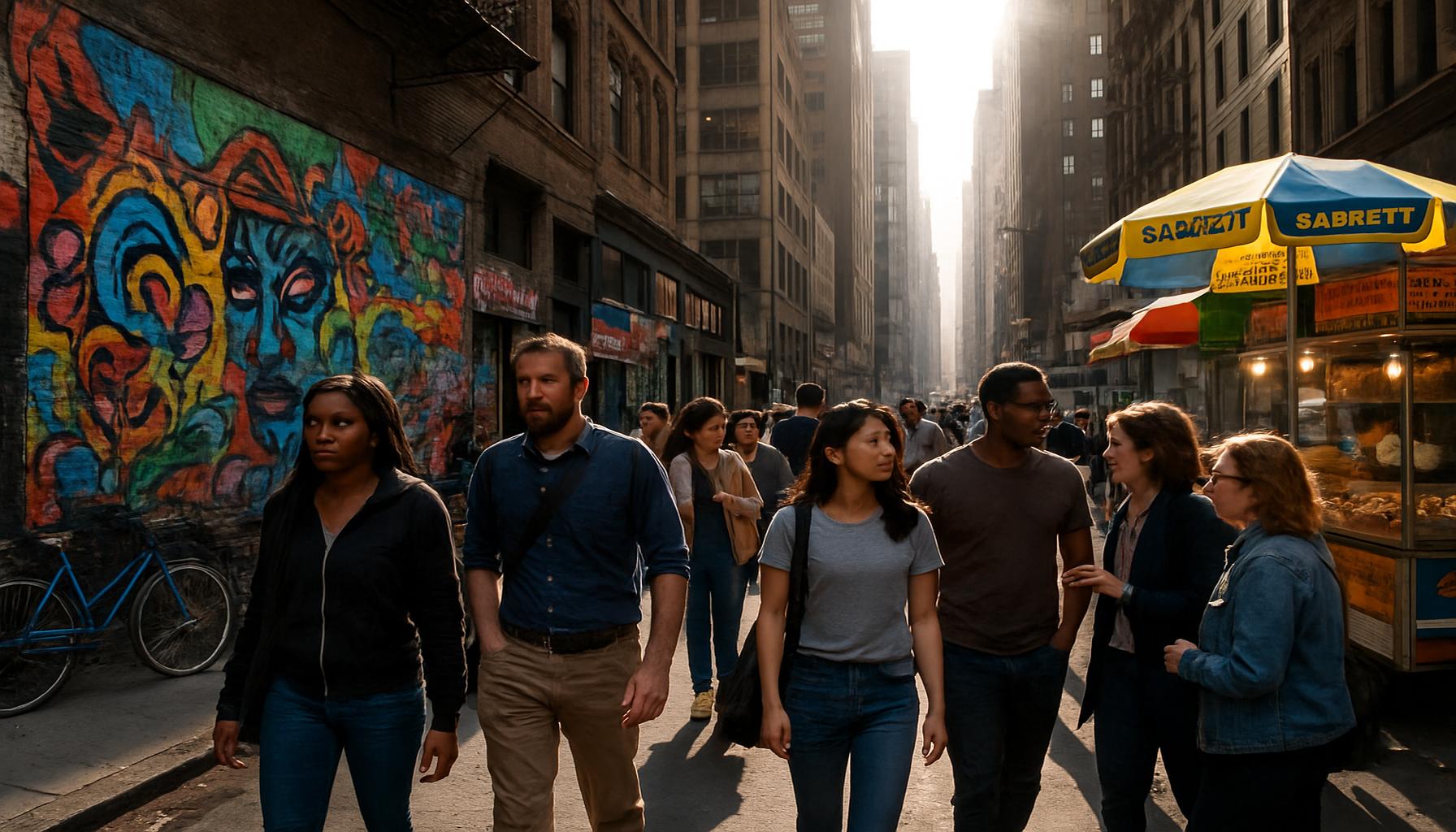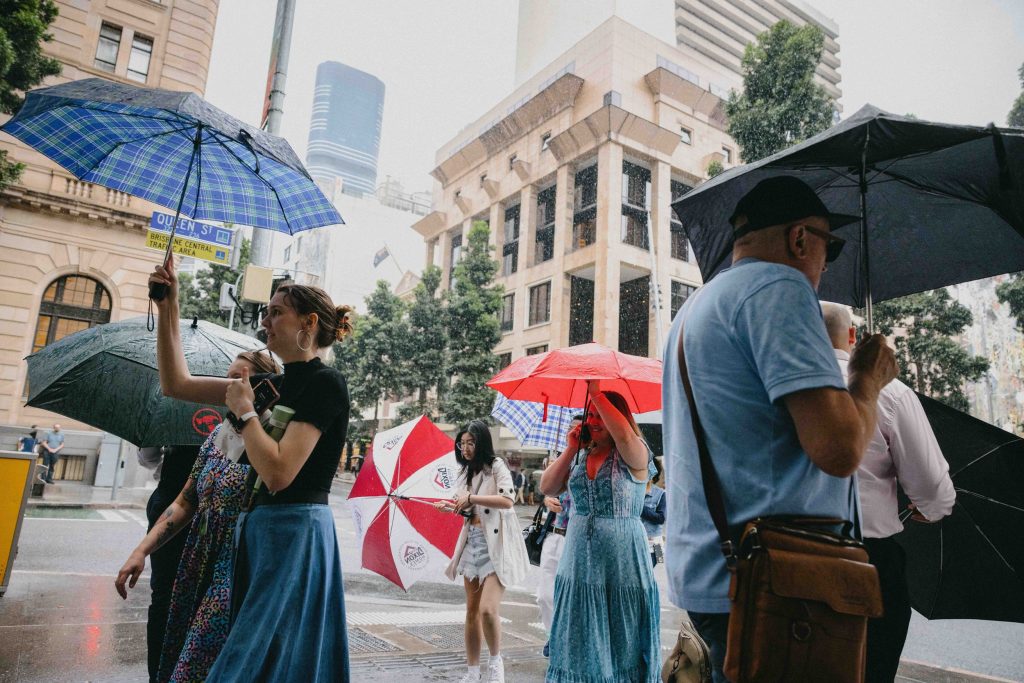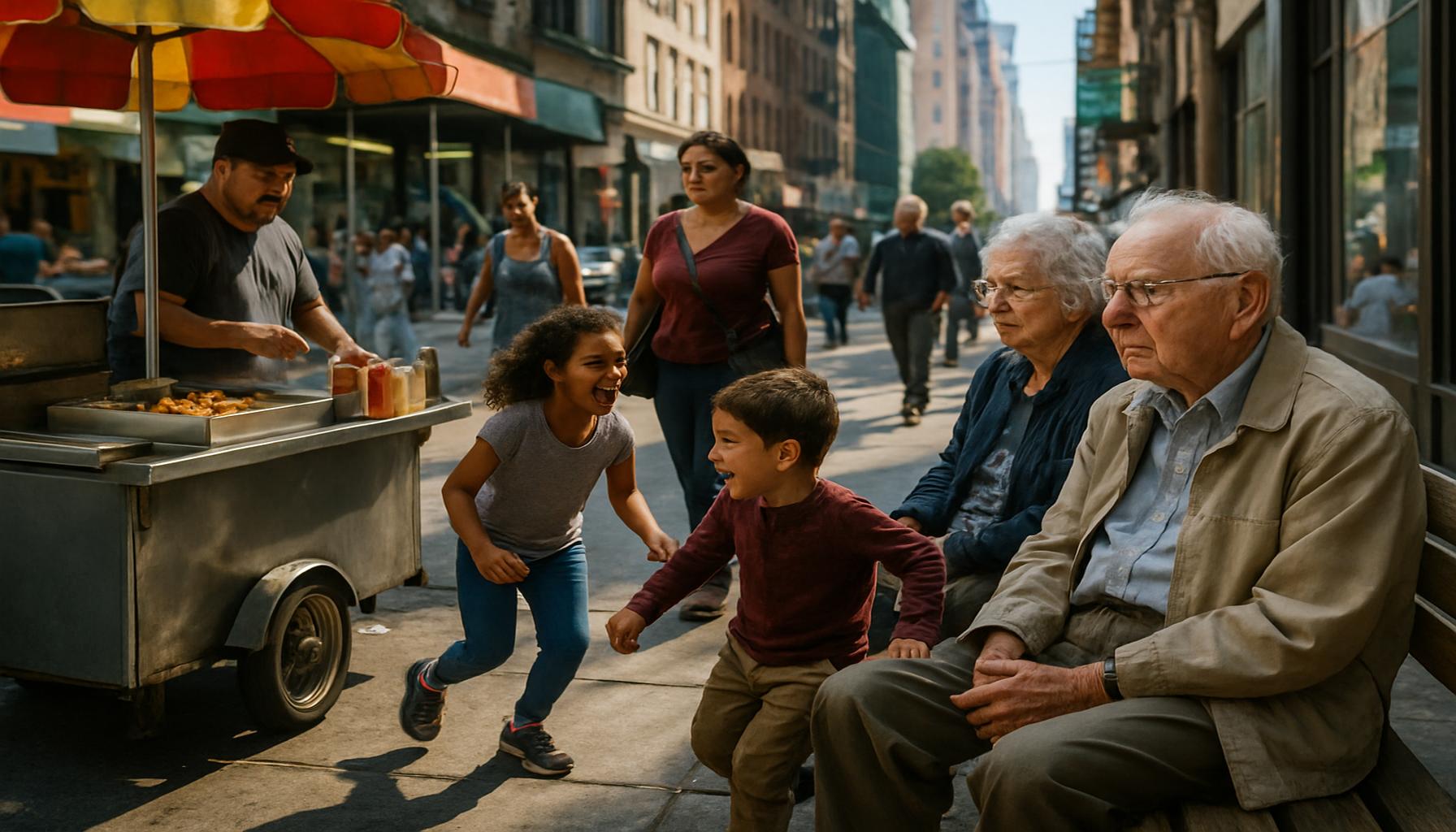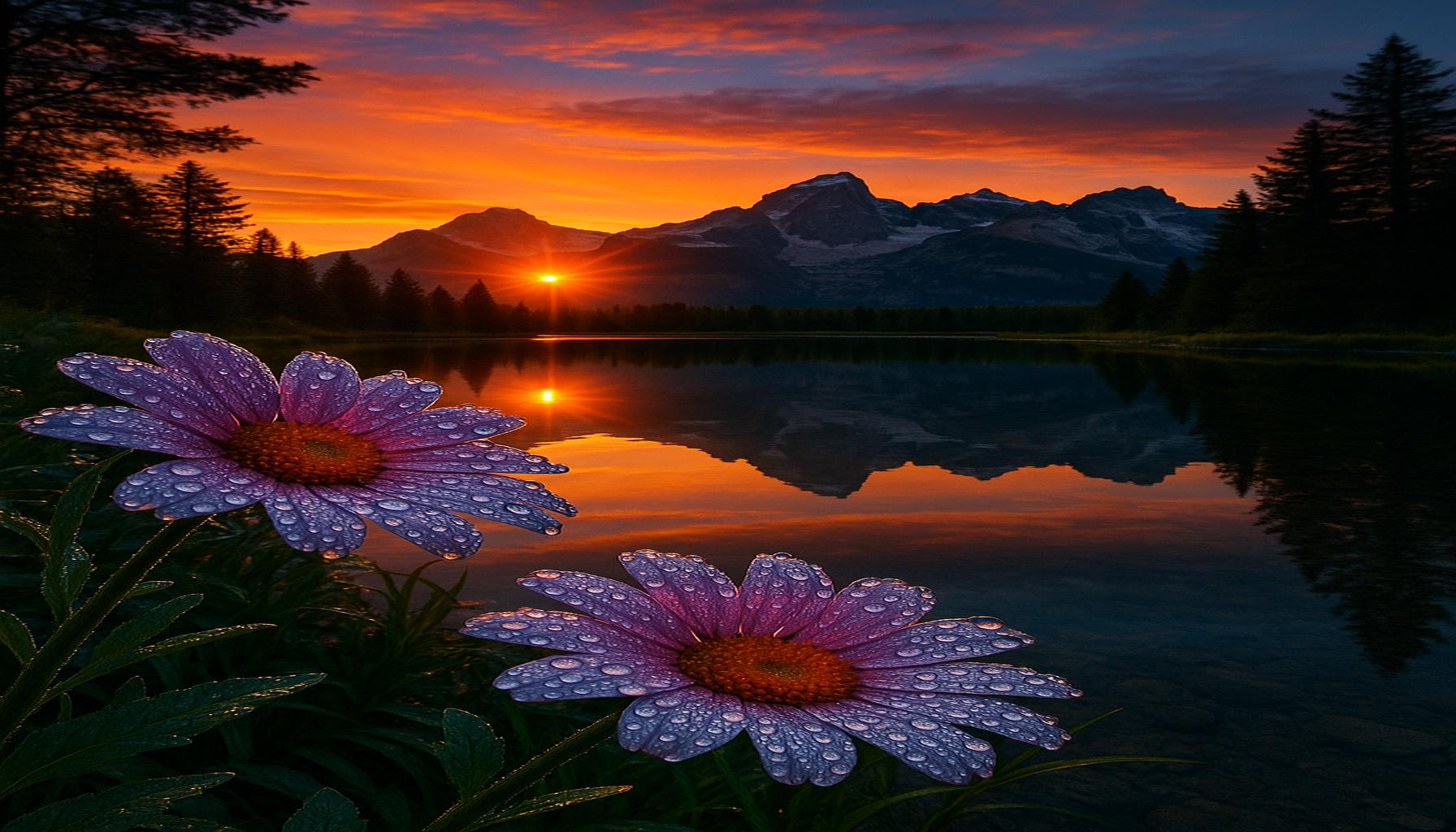Urban Street Photography Capturing City Lifes Essence Through the Lens

Introduction
In today’s fast-paced world, **street photography** serves as a powerful medium to capture the pulsating essence of urban life. It transforms the mundane into art, showcasing fleeting moments that tell compelling stories. This creative hobby not only enhances one’s photographic skills but also deepens the observer’s connection to the vibrant tapestry of city life.
The relevance of street photography lies in its ability to reveal the beauty and complexity of everyday moments. **Photography enthusiasts** and casual shooters alike are drawn to this genre for its candid nature and potential for storytelling. As we delve deeper into this fascinating art form, prepare to explore the **Top 5** tips and techniques that will elevate your street photography experience.
- Understanding light and shadow for dramatic impact.
- Developing a keen eye for composition and framing.
- Engaging with subjects to capture authentic emotions.
- Adapting to different environments enhances creativity.
- Learning from the masters can inspire your own style.
Let’s embark on a journey through the lens, uncovering the secrets to capturing the magnificent essence of urban life.
Top 5: Street Photography – Capturing the Essence of Urban Life through the Lens
Street photography is a captivating genre that reveals the heart and soul of urban life through the lens of a camera. This powerful form of artistic expression not only showcases the beauty of everyday moments but also tells compelling stories about society, culture, and human interaction. Whether you’re an aspiring street photographer or simply an admirer of the craft, here’s a ranking that dives into the most essential elements of street photography, guiding you in capturing the essence of urban life.
5. The Role of Light and Shadow
In any form of photography, light plays a crucial role, but in street photography, it becomes a vital tool for storytelling. The interplay of light and shadow can transform an ordinary scene into something extraordinary. Photographers may seek out early morning or late afternoon light when the sun casts long shadows, creating a dramatic effect. Additionally, harsh overhead lights during midday can create stark contrasts that highlight the emotions and moods of passersby.

- Natural Light: Consider how natural light interacts with your subjects. The warm hues of sunset or the cool tones of twilight can change the feel of a photo dramatically.
- Shadow Patterns: Look for interesting shadow patterns that can add depth and intrigue to your image. A shadow cast by an intricate fence or a person walking can become an unexpected protagonist of your composition.
- Artificial Light: Don’t shy away from utilizing artificial lighting in urban settings, especially neon signs or street lamps that can give life after dark. These sources of light can provide a vibrant glow, turning mundane scenes into captivating visuals full of mystery and mood.
To master the use of light and shadow, it’s crucial to develop an eye for detail and experiment with various times of the day and weather conditions. Each light condition offers a different mood and atmosphere, transforming your photographs into evocative stories.
4. The Importance of Composition
Composition is fundamental in creating visually appealing street photographs. In this context, it refers to the arrangement of elements within the frame that guides the viewer’s eye and conveys the intended message. The Rule of Thirds, leading lines, and framing are just a few techniques that can enhance a photograph’s impact. Street photographers often work with dynamic compositions that capture motion and fleeting moments.
- Rule of Thirds: Place key elements along the intersection points to create balance. This classic guideline helps in organizing the image and making it more balanced and harmonious.
- Leading Lines: Use lines in the environment, such as roads, buildings, or shadows, to draw attention to the subject. These lines naturally lead the viewer’s eyes to the focal point, adding depth and direction to the scene.
- Framing: Utilize natural frames such as doorways, windows, or arches to focus on your subject. Framing can isolate your subject and bring an added layer of depth, emphasizing the focal point within a bustling urban landscape.
By using these composition techniques, photographers create images that are not only aesthetically pleasing but also rich in narrative potential, providing a glimpse into the complexities and nuances of urban life.
3. The Power of Human Connection
One of the most compelling aspects of street photography is its ability to capture human emotions and interactions. A fleeting glance, an affectionate embrace, or a candid moment of laughter can all tell powerful stories about the human experience within urban landscapes. Street photographers should focus on the relationships between people and their environment, embracing moments that reflect culture and community.
- Candid Moments: Investing time in observing your surroundings can lead to surprising interactions that make for great photos. Patience and intuition play a vital role in seizing these moments.
- Expressions: Human facial expressions can evoke empathy; capturing them can resonate with viewers on a personal level, bringing relatability and depth to the image.
- Community Events: Attend local events where connections are strongest to capture authentic moments. Festivals, markets, and public gatherings offer rich opportunities to document the pulse of community life.
Capturing genuine human connections requires a blend of empathy and adaptability, allowing the viewer to engage with emotions and stories conveyed through imagery. This, in turn, helps build a narrative that resonates beyond the photograph.
2. Capturing Urban Stories
Street photography is a visual narrative that portrays the life and culture of the city. Every photograph has the potential to tell a story, be it through the architecture, the people, or the unique atmosphere of a location. Focusing on these stories reveals a more profound insight into the community, transforming photographs into poignant reflections of urban life.
- Local Culture: Explore different neighborhoods to discover diverse cultures and lifestyles within the city. Each area carries its own energy and visual identity, enriching the stories you can tell.
- Architecture: Include architecture as a backdrop to enrich the narrative. Buildings, bridges, and urban developments reflect the history and evolution of a place, suggesting the city’s character and time’s passage.
- Everyday Life: Look for scenes that depict daily routines, as they often provide the most relatable and profound stories. A vendor at a street stall or commuters heading to work are scenes that resonate universally.
By documenting urban stories, photographers offer viewers an insightful journey into the city’s heartbeat, revealing the dynamism and diversity that define urban landscapes.
1. Finding Your Unique Voice
At the core of great street photography lies the photographer’s unique voice—the ability to express one’s perspective through their work. Recognizing your style and approach can differentiate you in a world filled with countless images. This personal touch can be achieved by experimenting with techniques, themes, and establishing a connection with your urban surroundings. Your significant influence as a photographer can bring fresh narratives to life, enriching the genre.
- Experimentation: Don’t be afraid to bend the conventional rules of photography to develop your own style. This might involve trying different perspectives, unconventional framing, or playing with colors and tones to carve out your own niche.
- Consistent Themes: Develop consistent themes or subjects that resonate with you, ensuring your work has coherence and depth.
- Emotional Connection: Connect emotionally with the scenes you capture. The depth of personal reflection often translates into more compelling storytelling with universal appeal.
By finding your unique voice, you contribute to the ever-evolving tapestry of street photography, encouraging others to see the world through your distinct lens and preserving moments that might otherwise go unnoticed.
In conclusion, street photography offers a powerful means of documenting urban life. By mastering the elements of light and shadow, composition, human connection, storytelling, and personal style, photographers can create compelling images that captivate, enlighten, and inspire exploration. Street photography is not just about capturing images; it’s about offering new perspectives, diving into stories untold, and portraying the vibrant essence of urban landscapes for the world to see.
| Narrative Storytelling | Emotional Connection | Candid Moments | Cultural Insights |
|---|---|---|---|
| In street photography, the narrative storytelling element becomes a vital aspect, creating compelling visuals that convey the essence of urban life. | It forms a strong emotional connection between the audience and the subjects, dialogue evoked through the lens. Viewers often resonate with shared human experiences. | Photographers capture candid moments, showcasing spontaneous interactions and genuine emotions that are often missed in posed settings. | Street photography allows for deep cultural insights, offering perspectives on societal norms, challenges, and triumphs that shape a community. |
| Amazing stories unfold through images; the urban environment narrates the human condition, appealing to a diverse audience. | It resonates particularly with those who seek to understand diverse life stories, making it relatable and impactful. | However, these moments can sometimes happen in chaotic settings that pose challenges, such as framing distractions. | Strategically showcasing local traditions contributes to a greater comprehension of social dynamics present in urban settings. |
| Every photograph can capture a scene rich with narratives, leading to interpretations that evolve as society changes. | An image can encapsulate countless emotions, provoking thoughts and discussions surrounding the human experience. | While candid shots are appealing, they might not always translate effectively in technical execution, impacting the overall message. | Engaging with local communities enriches the photographer’s perspective and deepens understanding, often resulting in more powerful imagery. |
| Photographers who weave narrative into their work might find enhanced viewer engagement, as stories resonate on various levels. | Those seeking connection through art often gravitate toward photography that elicits a visceral emotional response. | Candid moments are spontaneous, leading to breathtaking captures, but they require patience and observation from the photographer. | Such insights spark conversations that transcend the art, creating dialogue about societal values and behaviors. |
Frequently Asked Questions About Street Photography
What is the main appeal of street photography?
Street photography offers a unique perspective on the world around us, capturing the unpredictability and spontaneity of urban life. It challenges photographers to find beauty and intrigue in ordinary moments. Whether it’s a fleeting smile, an unexpected interaction, or an interesting composition of shadows and architecture, street photography allows us to see cities through a fresh lens. The appeal lies in its authenticity and the story each photograph tells.
How can I get started with street photography?
Starting with street photography doesn’t require expensive equipment; a simple camera or even a smartphone can be sufficient. What’s important is developing a keen eye for detail and a sense of timing. Begin by exploring your local area and observing daily life. Experiment with different angles and lighting conditions. Remember, practice and patience are key. Over time, you’ll develop your own style and start capturing moments that truly reflect the urban essence. It’s also beneficial to study works from renowned street photographers to gain inspiration and new techniques.
What ethical considerations should I keep in mind while photographing people on the street?
When engaging in street photography, it’s crucial to respect people’s privacy and rights. While capturing candid moments is part of the genre’s charm, always consider the context and potential impact of your images. Avoid photographing vulnerable individuals in embarrassing or compromising situations. If someone objects to being photographed, it’s respectful to comply with their wishes. Additionally, familiarizing yourself with local laws regarding public photography can help navigate potential legal issues. Ethical street photography should aim to celebrate life’s diversity, not exploit it.
Does street photography need to be in black and white?
While black and white photography has a classic appeal and can highlight contrasts and emotions, it’s not a requirement for street photography. Many photographers choose black and white to remove the distraction of color and focus on composition and mood. However, color photography can make images vibrant and dynamic, highlighting the urban landscape’s diverse palette. The choice between color and black and white depends on the story you wish to tell through your images. Both styles have unique merits and can significantly impact the viewer’s perception.
What are some common challenges faced in street photography?
Street photography presents several challenges, such as dealing with unpredictable elements like lighting, weather, and crowd dynamics. Another challenge is overcoming the fear of photographing strangers in public spaces. Building confidence is essential, and respecting etiquette can ease this discomfort. Additionally, capturing decisive moments requires a quick reflex and intuition, as they rarely offer second chances. Finally, selecting and editing photos post-shoot can be challenging, as it involves choosing the strongest images that convey your narrative effectively. Embrace these challenges as opportunities to grow creatively.
Conclusion
Street photography, often considered the soul of urban life, offers a profound insight into the vibrant tapestry of city existence. As we’ve explored throughout this article, the essence of capturing the daily rhythms of urban environments lies in the photographer’s ability to observe and foresee moments of authenticity and emotion, often fleeting in nature. These snapshots not only portray the mundane but also celebrate the unexpected beauty found in everyday life, echoing the spontaneity and diversity that characterize urban settings.
The art of street photography demands a balance between anonymity and revelation, guiding photographers to navigate public spaces while crafting narratives that resonate with universal human experiences. This genre challenges creators to look beyond the surface, urging them to understand cultural nuances, the play of shadows and light, and more importantly, the stories within each frame. It’s this complexity that makes street photography not only a creative hobby but also a powerful medium for storytelling and social commentary.
By embracing the unpredictable and capturing unguarded moments, street photographers function as invisible historians, documenting urban life with an unparalleled intimacy. The significance of street photography in creative pursuits lies in its accessibility, requiring nothing more than a keen eye and a passion for discovery. As such, it encourages amateurs and seasoned photographers alike to venture into the world and immerse themselves in the ever-evolving narrative of city life.
In conclusion, street photography is more than mere picture-taking; it’s an invitation to engage with our surroundings and appreciate the silent stories unfolding around us. For those eager to develop a creative hobby that enriches both the artist and the viewer, street photography offers an inexhaustible reservoir of inspiration and intrigue. It’s a gentle reminder of the interconnected fabric of urban life, ever waiting to be captured through the discerning lens of those willing to see.


